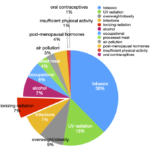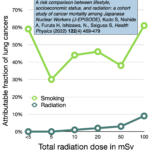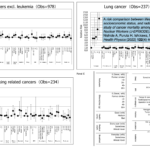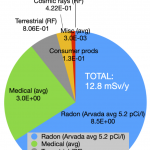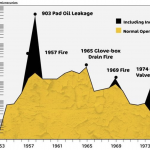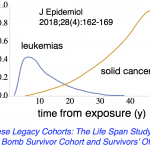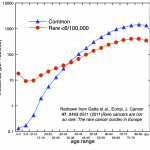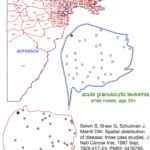Epidemiology is a subtle and demanding discipline that provides the tools to discover and characterize unusual patterns of disease. General anxiety about nuclear radiation dates to the 1950s (see Godzilla!) and public awareness of soil contamination downwind of the Rocky Flats plant dates to the 1970s. After Carl Johnson's quickly discredited article in 1981, competent epidemiologists revisited the most plausible cancer rates downwind, being careful to compensate for large variations in population density. Three documents coming soon provide background in epidemiology, the details of studies carried out downwind, and how radiation epidemiology is updated frequently.
The first document above explains careful epidemiology and gives as examples reliable results for radiation exposure and the incidence of associated cancers, including early leukemias and later 'solid cancers'. The second document examines all epidemiological studies of the Rocky Flats area, including `anecdata' from an ill-considered survey carried out by the Rocky Flats Downwinders. The third reflects changes which will eventually be incorporated in the international framework for predicting disease outcomees from radiation doses using millions of person-years worth of monitoring.
Careful epidemiology requires controllling for `confounders'--other possible causes of the same disease. An exceptional recent survey of Japanese nuclear workers controlled for pack-years of smoking, radiation exposure, drinking, overall health consciousness, routine medical care, job category, job status, and education. Smoking is by far the dominant cause of virtually all cancers. Compare the relevant radiation doses with the approximately 0.002 millisievert per year if you lived right on the eastern boundary of the Refuge, where plutonium levels are highest.
By the time careful studies were carried out in the late 1980s, almost 30 years had elapsed since the 1957 fire responsible for the largest radiation releases from Rocky Flats. Given the 'incubation time' for cancers to emerge, plenty of leukemias (the `canary in the coal mine') and solid cancers should have been detectable had exposures been significant. No excess rates among the public were found.
Given that the current state of the art in epidemiology can barely detect the differences in leukemia rates between areas with different background radiation rates, and that soil Pu inhalation and ingestion doses are many hundreds of times smaller than local background radiation doses, it seem likely that no health consequences of living around downwind of Rocky Flats will ever be detected, nor that serious non-CDPHE epidemiologists will revisit Rocky Flats.
A recent International Commission on Radiological Protection document (Publication 150) considers specifically cancer risk from plutonium, for nuclear workers. Since the risk is mostly via inhalation, lung cancer is the most prominent health outcome for heavy plutonium exposure. The report notes “It is now possible to estimate the lifetime excess risk of lung cancer following inhalation of plutonium directly from epidemiological studies of plutonium workers.” "In contrast, epidemiological studies of environmental exposure to plutonium and uranium do not indicate increased risk of cancer overall. . . [italics ours]. In other words, there is no epidemiological evidence so far of any increased risk of cancer from plutonium or uranium in the environment.
anecdata
- The usage of multiple points of anecdotal data to confirm any stipulation often used to "prove" pseudo-scientific claims of illnesses and treatments [urbandictionary.com]
- Anecdotal evidence based on personal observations or opinions, random investigations, etc., but presented as fact [Dictionary.com]
- Information that is presented as a substantiated truth (i.e., data), when it is in fact based on personal experience, speculation or opinion (i.e., anecdote) [kinfolk.com]
- Information which is presented as if it is the result of serious research, but which is actually based on what someone thinks but cannot prove [Longman Dictionary of Contemporary English Online]
The Downwinders health survey of 2016 was a publicity stunt since it violated most precepts for epidemiology. Since its distributors chose to ignore academic advice, they have 'burned their bridges' with one class of experts and squandered the one opportunity they had. One clear conclusion emerged: people told for more than 25 years to be suspicious of the DOE and the CDPHE are happy to blame their illnesses (and those of relatives) on proximity to Rocky Flats.
